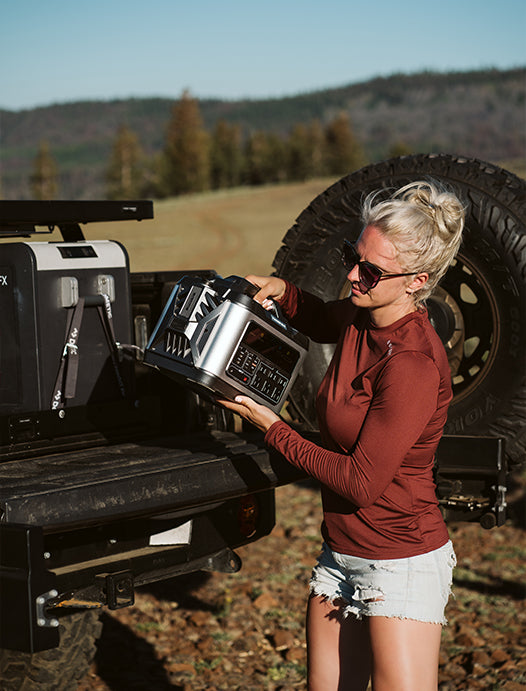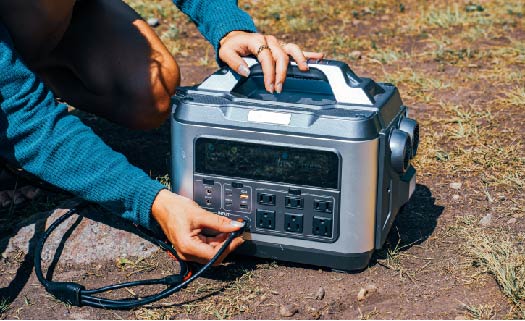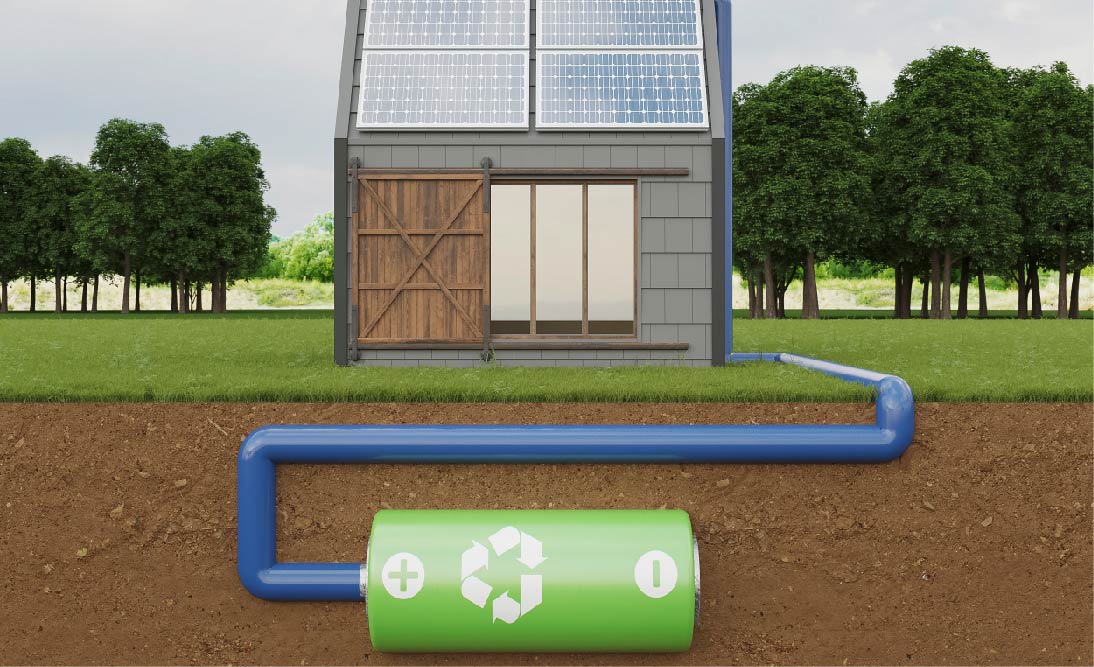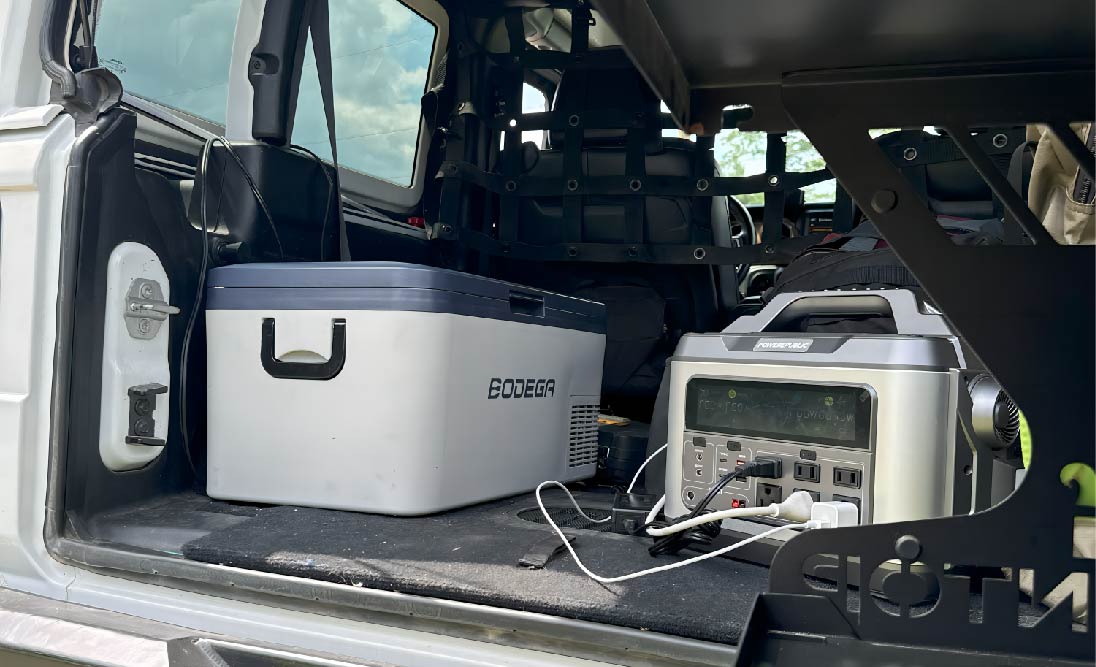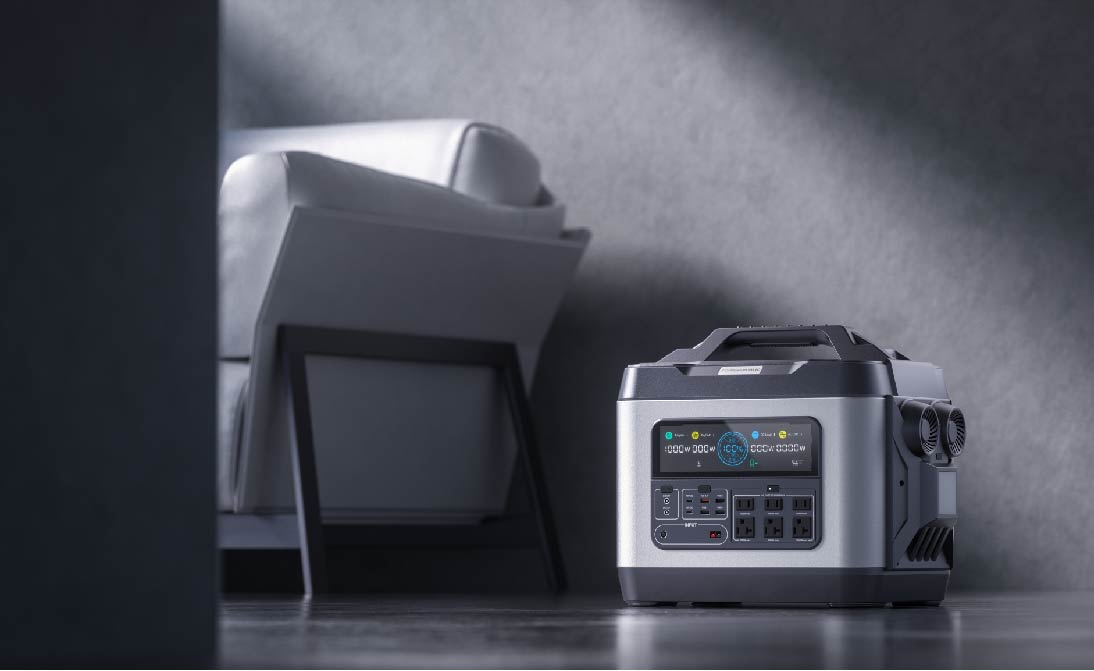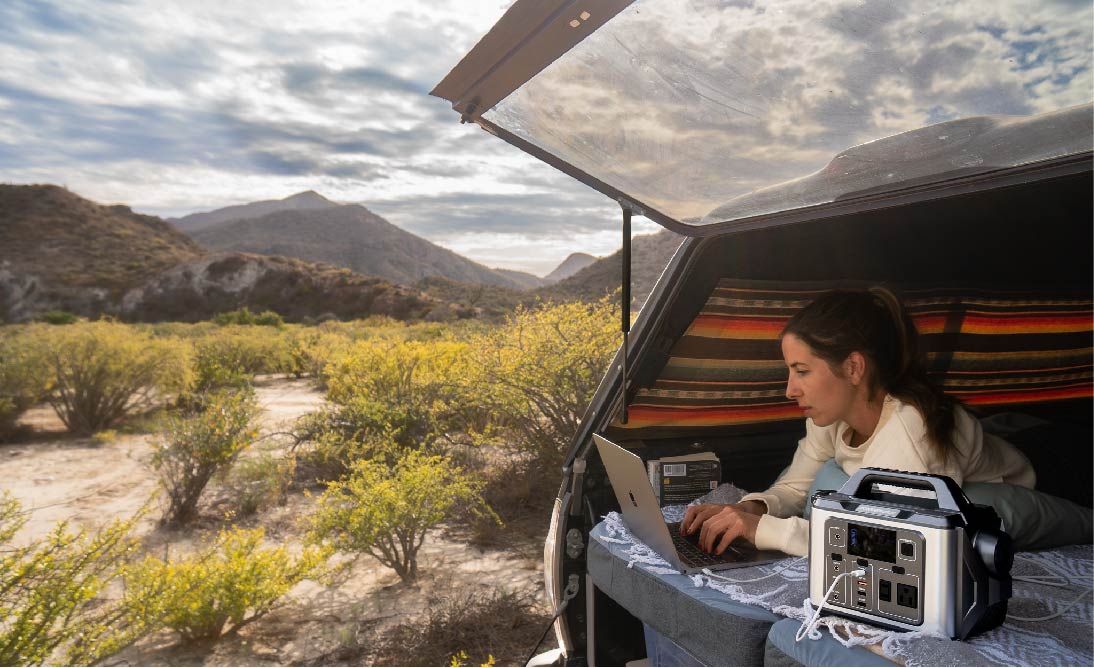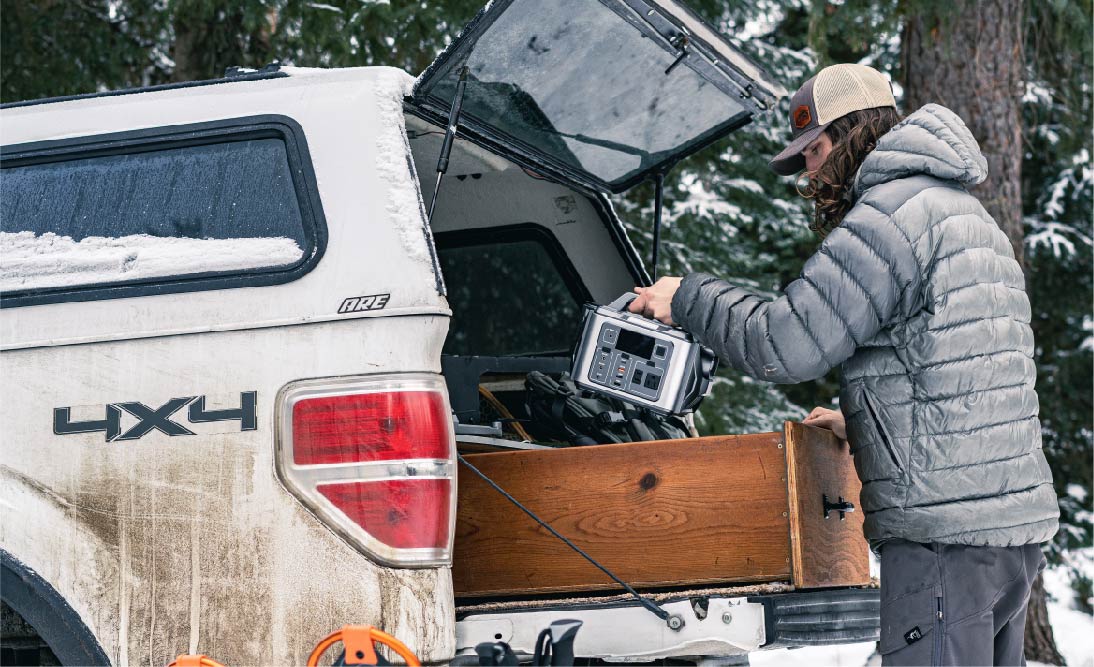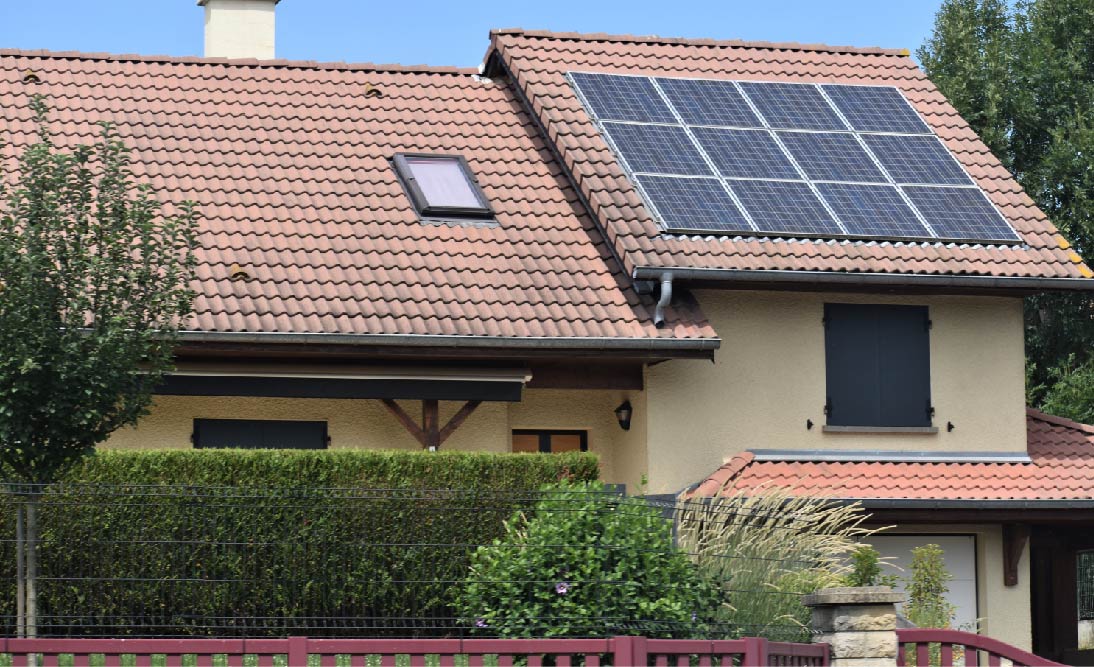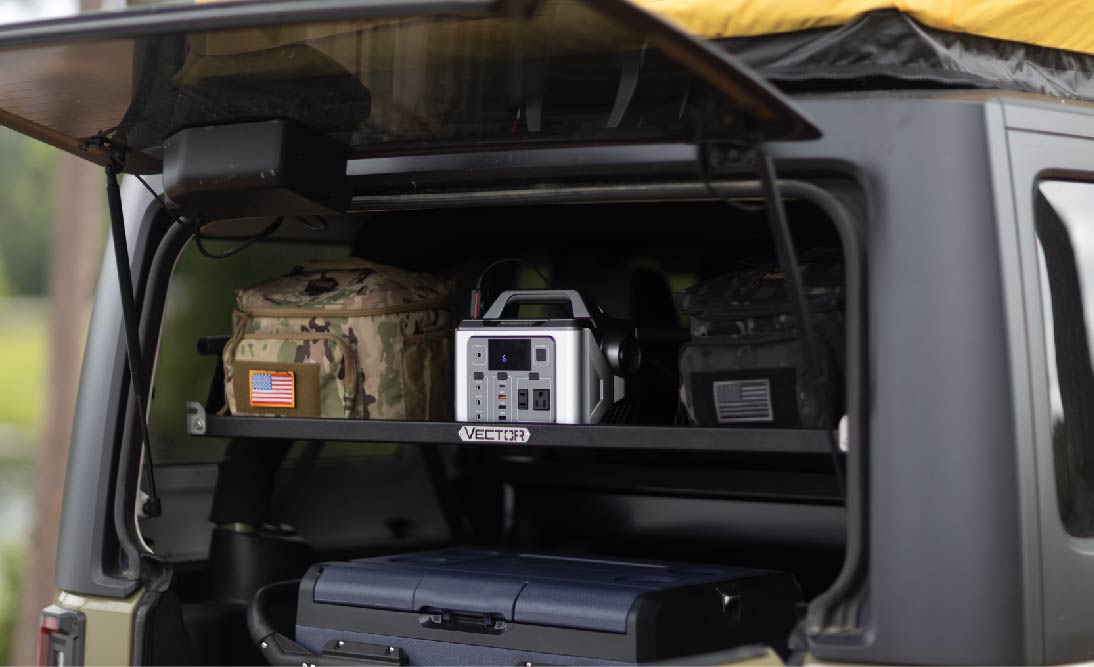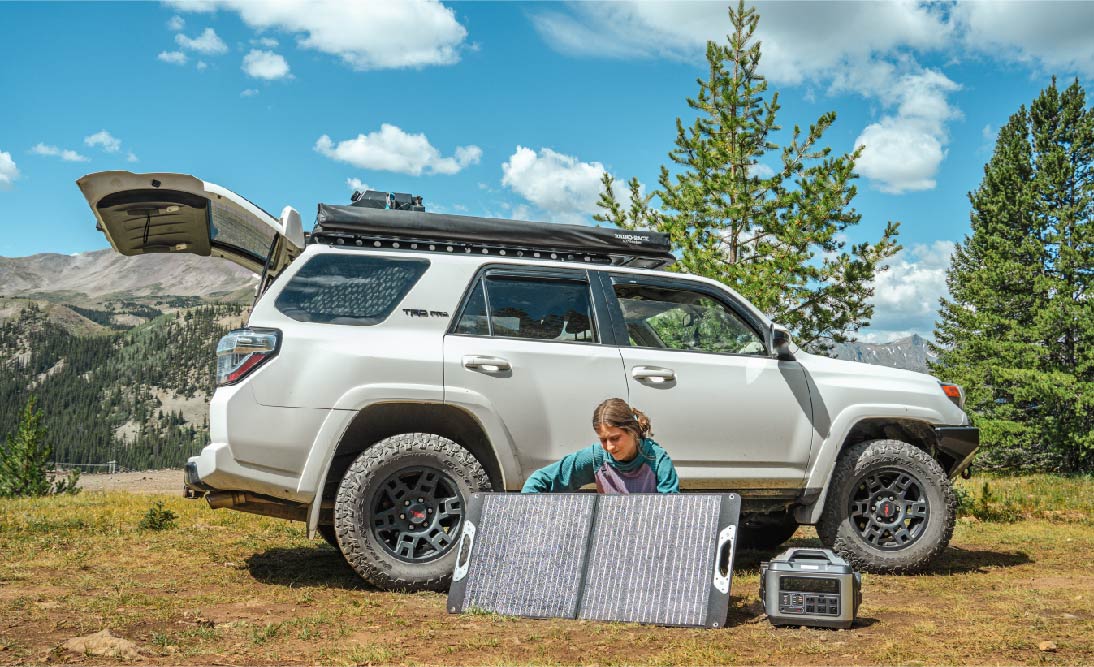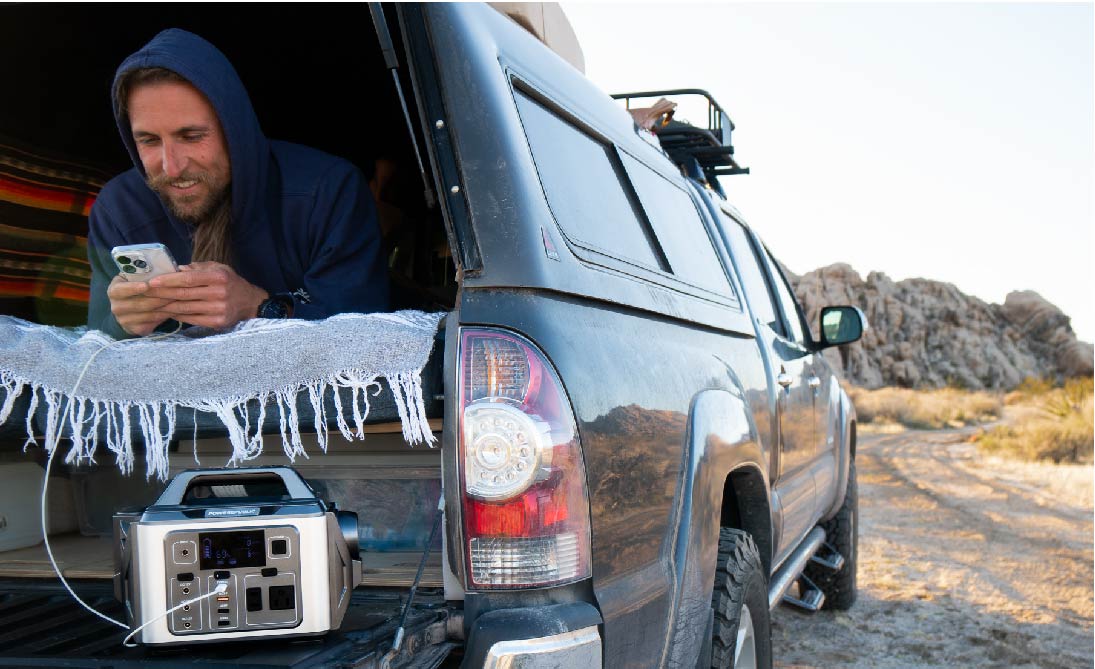Table of Contents:
-
FAQ I: What’s the Lifespan of Batteries or Portable Power Stations?
-
FAQ II: Are Back Up Power For Home or Portable Power Stations Worth the Money?
-
FAQ III: Can I Use Back Up Power For Home Without Solar Panel?
In an era where power outages are increasingly frequent due to severe weather and grid instability, securing reliable backup power for home is essential. These disruptions not only inconvenience us but can jeopardize safety, particularly for homes depending on electricity for critical needs. This brief guide aims to illuminate the importance of Back Up Power for Home, comparing traditional backup systems with modern portable power stations and showcasing the standout POWEREPUBLIC models.
We'll guide you in selecting the right backup solution to meet your specific requirements, addressing common inquiries about the lifespan and value of these systems, and the possibility of operating them sans solar panels. Understanding the strengths, benefits, and practical considerations of Back Up Power for Home is vital for any homeowner looking to safeguard their residence against the unpredictability of power outages, ensuring peace of mind and continuity in daily life.
Back Up Power For Home: What You Need To Know
Back Up Power for Home systems are designed to provide electricity when your main power source fails. They are essential during power outages, ensuring that critical devices like refrigerators, medical equipment, and lights stay operational.

Main Components and How They Work:
-
Battery: The core component where power is stored. For example, a 10 kWh battery can store enough electricity to power a 500W fridge for 20 hours (10 kWh / 500W = 20 hours).
-
Inverter: Converts DC power from the battery to AC power for home use. If you have a 1 kW inverter, it can effectively power devices up to 1000 watts.
-
Charge Controller: Ensures batteries are charged correctly and safely. For instance, a 30A charge controller can handle up to 720W from solar panels on a 24V system (30A x 24V = 720W).
-
Transfer Switch: Automatically switches your home's power supply from the grid to the backup system during an outage.
Types of Battery or Systems:
-
Lead-Acid Batteries: Traditional, like a car battery. Example: 12V 100Ah lead-acid battery, offering 1.2 kWh of energy (12V x 100Ah = 1200Wh or 1.2 kWh).
-
Lithium-Ion Batteries: More modern, like those in laptops. Example: 48V 50Ah lithium-ion battery provides 2.4 kWh (48V x 50Ah = 2400Wh or 2.4 kWh).
-
Nickel-Cadmium Batteries: Durable in extreme temperatures. Example: 24V 200Ah nickel-cadmium battery, yielding 4.8 kWh (24V x 200Ah = 4800Wh or 4.8 kWh).
-
Flow Batteries: Innovative for long-term use. Example: A flow battery with a 10 kWh capacity for extended backup.
Price Range:
-
Basic Lead-Acid Systems: From $1,000 to $3,000. For example, a 5 kWh lead-acid system might cost around $2,000.
-
Mid-Range Lithium-Ion Systems: $5,000 to $15,000. For example, a 10 to 12 kWh lithium-ion system could be priced at around $10,000.
-
High-End Systems: Over $20,000 for large capacities or advanced features. A 20 kWh high-end system with solar integration could exceed $25,000.
Understanding these basics helps in making an informed decision when selecting a Back Up Power for a Home system, tailoring it to your specific needs and budget.
Strengths and Limitations of Back Up Power For Home
The implementation of Back Up Power for Home systems is becoming increasingly important in an era marked by frequent power outages due to severe weather and grid instability. This guide highlights the strengths and limitations of Back Up Power for Home systems, providing examples and calculations for better understanding.

Strengths of Back Up Power for Home:
Reliable Power Supply:
-
Example: A 10 kWh battery system ensures a refrigerator (500W) stays operational for 20 hours (10 kWh / 500W).
-
Strength: Guarantees essential appliances remain functional during outages.
Diverse Options and Flexibility:
-
Example: Lithium-Ion battery (48V 50Ah) offers 2.4 kWh (2400Wh) suitable for more compact setups.
-
Strength: Catering to different needs, from small apartments to large homes.
Enhanced Safety:
-
Example: Automatic transfer switches seamlessly transition to backup power, safeguarding homes reliant on medical devices.
-
Strength: Essential in maintaining critical life-support systems during power disruptions.
Economic Efficiency:
-
Example: Mid-range Lithium-Ion systems may save costs over time, especially in outage-prone areas.
-
Strength: Long-term financial benefits by reducing reliance on grid power.
Limitations of Back Up Power for Home:
Initial Cost:
-
Example: A high-end 20 kWh system with solar integration can exceed $25,000.
-
Limitation: Significant upfront investment, which may be prohibitive for some homeowners.
Maintenance Requirements:
-
Example: Lead-acid batteries require regular maintenance to ensure longevity.
-
Limitation: Additional effort and potential costs for upkeep.
Physical Space:
-
Example: Traditional Lead-Acid batteries (12V 100Ah) are bulky and require ample space.
-
Limitation: Challenging for homes with limited space.
Complexity of Installation:
-
Example: Integrating a system with existing electrical setups may need professional assistance.
-
Limitation: Adds complexity and additional costs for installation.
Understanding these strengths and limitations is crucial for homeowners considering Back Up Power for Home systems. It allows for a more informed decision-making process, ensuring the selected system aligns with individual needs, budget constraints, and space availability. In summary, while Back Up Power for Home systems provides essential support during power outages, considerations around cost, maintenance, space, and installation complexity should be carefully weighed.
Portable Power Station VS. Back Back Up Power For Home
As technology advances, portable power stations have gained a lot of popularity due to their portability, versatility, and functionality, making them one of the options for home back up power.
Is a Portable Power Station a Viable Back Up Power for Home?
Yes, portable power stations can be used as Back Up Power for Home, especially in scenarios where portability and ease of use are key. However, their suitability largely depends on the specific power requirements of your home.

Portable Power Station vs. Back Up Power for Home
1. Capacity and Power Output:
Portable Power Station:
-
Example: A portable station with a capacity of 1 kWh can run a 100W laptop for about 10 hours (1 kWh / 100W).
-
Suitable for: Essential electronic devices and shorter-term needs.
Back Up Power for Home:
-
Example: A 10 kWh home battery system can keep a 500W fridge running for 20 hours (10 kWh / 500W).
-
Suitable for: Running multiple large appliances during extended outages.
2. Installation and Maintenance
Portable Power Station:
-
Virtually maintenance-free and does not require installation.
-
Ideal for: Those seeking ease of use without complex installation.
Back Up Power for Home:
-
Requires professional installation and periodic maintenance, especially for systems like lead-acid batteries.
-
Ideal for: Homeowners looking for a permanent solution and willing to manage maintenance.
3. Cost and Economic Efficiency:
Portable Power Station:
-
Generally more affordable, with basic models starting around $300.
-
Cost-effective for: Temporary power needs and smaller budgets.
Back Up Power for Home:
-
Can be a significant investment, with systems often exceeding $5,000.
-
Cost-effective for: Homeowners looking for long-term solutions, especially in areas with frequent outages.
4. Flexibility and Use Cases:
Portable Power Station:
-
High portability makes it suitable for both indoor and outdoor use.
-
Use cases: Ideal for camping, outdoor activities, and backup for specific devices.
Back Up Power for Home:
-
Designed to integrate with home electrical systems and can support whole-house power needs.
-
Use cases: Essential for homes with critical power needs, such as medical equipment.
While Portable Power Stations offer an alternative to traditional Back Up Power for Home, their applicability depends on the scale of power needs. For smaller, short-term power requirements, a portable station is sufficient and cost-effective. However, for comprehensive home power backup, particularly in residences with significant power demands, a dedicated Back Up Power for Home system is more appropriate. Understanding these distinctions is crucial for homeowners to ensure they choose the right type of backup power solution, providing peace of mind and continuity during power outages.
How To Find Out The Ideal Back Up Power For Home?
Selecting the ideal Back Up Power for the Home system requires careful consideration of your specific needs, budget, and space constraints. Here's a guide, including examples and calculations, to help you make an informed decision.

1. Assess Your Power Requirements:
Calculate Your Power Needs:
-
Identify critical appliances and devices you need to operate during power outages (e.g., fridge, lights, medical equipment).
-
Example: If a fridge uses 500W and you want it to run for 24 hours, you need 12 kWh (500W x 24h).
Determine Backup Duration:
-
Decide how long you need the system to provide power.
-
Example: For 24-hour support, multiply the total wattage of your appliances by 24 hours.
2. Choose the Right Type of System:
Lead-Acid Batteries:
-
Suitable for limited budgets and shorter backup needs.
-
Example: A 12V 100Ah lead-acid battery offers 1.2 kWh, enough for a few essential items for a short period.
Lithium-Ion Batteries:
-
Ideal for longer backups and more extensive power needs.
-
Example: A 10 kWh lithium-ion system can power a 500W fridge for 20 hours.
Portable Power Stations:
-
Best for portable, short-term needs, or smaller appliances.
-
Example: A 1 kWh portable station can run a 100W laptop for 10 hours.
3. Consider Installation and Maintenance:
Space and Installation Requirements:
-
Ensure you have the space for the system, and consider the complexity of installation.
-
Example: Lead-acid systems are bulkier and might require professional installation.
Maintenance Needs:
-
Factor in the maintenance, especially for systems like lead-acid batteries.
-
Example: Regular checks and upkeep are needed for lead-acid batteries to ensure longevity.
4. Evaluate Economic Efficiency:
Initial Investment vs. Long-Term Savings:
-
Higher upfront costs might lead to more savings in the long run.
-
Example: A $10,000 lithium-ion system could be more cost-effective over time compared to cheaper, less efficient options.
Cost of Maintenance and Operation:
-
Consider ongoing costs, including maintenance and electricity charges for charging the batteries.
-
Example: Lithium-ion batteries often have lower maintenance costs compared to lead-acid batteries.
5. Flexibility and Future-Proofing:
Scalability:
-
Choose a system that can be expanded or upgraded as your needs grow.
-
Example: Modular lithium-ion systems allow for easy expansion.
Compatibility with Renewable Energy Sources:
-
Consider systems that can integrate with solar panels for additional independence and sustainability.
-
Example: Systems with built-in charge controllers for solar panel integration.
So when choosing the ideal Back Up Power for your Home, it's important to thoroughly assess your power needs, consider the type of system that best suits those needs, understand installation and maintenance requirements, evaluate the cost-effectiveness, and consider the system's flexibility and future scalability. Each household will have unique requirements, and these steps will ensure you select a backup power solution that provides reliability and peace of mind during power outages.
How To Find Out The Ideal Portable Power Station For Home?
Choosing the right Portable Power Station as a Back Up Power for the Home solution requires understanding your specific power needs and how these portable units can meet them. Here, we will walk you through the process, providing examples and calculations for a better grasp.

1. Determine Your Power Needs:
Assess Your Appliances and Devices:
-
List the devices you need to power during an outage (e.g., smartphones, laptops, small medical devices).
-
Example: A smartphone may need 5W to charge, and a laptop might require 60W.
Calculate Total Power Requirement:
-
Add up the wattage of all devices to get the total power requirement.
-
Example: For a smartphone (5W) and a laptop (60W), the total is 65W.
2. Evaluate Battery Capacity and Output:
Battery Capacity:
-
Check the watt-hour (Wh) or kilowatt-hour (kWh) rating of the portable power station.
-
Example: A 500Wh portable station can provide 500 watts of power for one hour.
Power Output:
-
Ensure the station can handle the combined wattage of your devices.
-
Example: If your total device load is 65W, a 500Wh station can power them for about 7.7 hours (500Wh / 65W).
3. Consider Portability and Size:
Physical Size and Weight:
-
Choose a size that's convenient for your space and easy to move.
-
Example: A compact unit weighing 10 pounds may be ideal for small homes or apartments.
4. Look at Additional Features:
Solar Charging Capability:
-
If you plan to use solar panels, ensure compatibility.
-
Example: A power station with a built-in solar charge controller allows for sustainable charging.
Output Ports:
-
Check for the variety and type of output ports (USB, AC outlets, DC ports).
-
Example: Multiple USB ports are useful for charging smartphones and tablets.
5. Assess Cost and Value:
Price Range:
-
Portable power stations can range from $300 to over $1,000.
-
Example: A 500Wh unit may cost around $500, suitable for basic Back Up Power for Home needs.
Cost-Effectiveness:
-
Balance the cost against the features and capacity.
-
Example: Paying extra for solar compatibility might be worth it for long-term savings and sustainability.
6. Understand Lifespan and Maintenance:
Battery Lifespan:
-
Check the number of charge cycles the unit can handle.
-
Example: A good quality portable power station might last for 500 to 1000 charge cycles.
Maintenance Requirements:
-
Most portable power stations require minimal maintenance.
-
Example: Lithium-ion batteries typically need less upkeep compared to lead-acid batteries.
7. Review Brand Reputation and Reviews:
Brand Reliability:
-
Choose brands with positive reviews and good customer support.
-
Example: Research brands like POWEREPUBLIC known for reliable Back Up Power for Home solutions.
Customer Reviews:
-
Read user experiences to gauge performance and reliability.
-
Example: Look for reviews mentioning use during power outages or for emergency backup.
When selecting a Portable Power Station for Back Up Power for your Home, consider your total power requirements, battery capacity, portability, additional features, cost, lifespan, and brand reputation. Each of these factors will help you choose a power station that not only fits your immediate needs but also offers reliability and value in the long run.
POWEREPUBLIC Models: Back Up Power For Home
From the discussion above, we know that Portable Power Stations can be used as an alternative backup power source for homes, especially for smaller and short-term power requirements. They are sufficient and cost-effective for this type of application.

For those seeking a backup power solution for short-term home power outages, we recommend the POWEREPUBLIC T2200 and T3000 portable power stations. They can be used as a UPS (Uninterruptible Power Supply) for power outages lasting a couple of hours. However, if the power outages extend for days, we recommend installing a professional backup power system for your home. Now, let’s examine the similarities and differences between the T2200 and T3000 models.
|
Feature/Model |
||
|
Capacity |
2240Wh 100,000mAh |
3200Wh 125,000mAh |
|
Rated Power |
2200W |
3000W |
|
Surge Power |
4500W |
6000W |
|
Battery |
LiFePO4 |
LiFePO4 |
|
Ports |
15 Output Ports - 6*AC, 3*USB, 1*QC3.0, 2*Type C, 2*DC/12V, 1*Car Port |
15 Output Ports - 6*AC, 3*USB, 1*QC3.0, 2*Type C, 2*DC/12V, 1*Car Port |
|
Charging |
AC Adapter, Solar Panel, Car Charger |
AC Adapter, Solar Panel, Car Charger |
|
Solar |
230W Max |
230W Max |
|
Additional Features |
LDC Screen/Aluminum-alloy Body/LED Light |
LDC Screen/Aluminum-alloy Body/LED Light |
|
Weight |
64Ibs/30Kg |
88Ibs/40Kg |
|
Dimensions |
18.3*11.8*12.2 inch |
18.3*11.8*14.5 inch |
|
Est.Operation Time(h) |
Est.Operation Time(h)=Capacity(Wh) * 0.85 / The power of the item(W) |
|
|
TV (100W) |
19 hours |
27 hours |
|
Refrigerator (150W) |
12.5 hours |
18 hours |
|
Coffee Maker (600W) |
3 hours |
4.5 hours |
|
Microwave (1000W) |
2 hours |
2.5 hours |
|
Toaster (1200W) |
1.5 hours |
2.3 hours |
|
Portable Heater (1500W) |
1.3 hours |
1.8 hours |
|
Air Conditioner (2500W) |
Not Recommended |
1.1 hours |
|
Electric Oven (3000W) |
Not Recommended |
1 hour |
Note That:
-
The calculation for the expected runtime is based on using a single device at a time, starting with the power station fully charged. Be aware that power consumption can vary between different brands.
-
Verifying the continuous and peak power demands of your appliances is crucial. Ensure that the sum of their running and starting power needs does not surpass the maximum output capacity of your power station.
FAQ I: What’s the Lifespan of Batteries or Portable Power Stations?
The lifespan of batteries in back up power for home systems varies with the type and usage.

For instance, a Lead-Acid battery typically lasts for 3-5 years, while a Lithium-Ion battery can last up to 10 years. For example, if a Lithium-Ion battery in a portable power station is rated for 1000 charge cycles, and you use it fully once a week, it could last for approximately 19 years (1000 cycles / 52 weeks per year). However, this is under ideal conditions, and real-world factors like discharge depth and maintenance can affect this lifespan.
FAQ II: Are Back Up Power For Home or Portable Power Stations Worth the Money?
Assessing the value of back up power for home systems or portable power stations depends on individual circumstances.

For example, consider a back up power system costing $10,000 with a lifespan of 10 years, equating to $1,000 per year. If power outages occur frequently in your area, causing losses like spoiled food or disrupted work, and these losses amount to more than $1,000 annually, the system proves its worth. Similarly, for portable power stations, if the cost is $500 and it's used for 10 camping trips per year over five years, the cost per use is only $10, providing affordable and convenient power.
FAQ III: Can I Use Back Up Power For a Home Without Solar Panel?
Yes, back up power for home systems can function without solar panels. These systems are primarily charged from the main electrical grid.

For instance, a 10 kWh home battery system, when fully charged, could power a 500W fridge for 20 hours (10 kWh battery / 500W = 20 hours). Adding solar panels to this system is an option for sustainable energy sourcing and can reduce dependence on the grid, but it isn't a necessity for the system’s operation. Solar panels serve as a supplementary source, enhancing the system's resilience and eco-friendliness.
Final Thoughts
In conclusion, securing reliable back up power for home is more critical than ever in today's climate of frequent power outages and grid instabilities. Whether opting for a traditional backup system or a modern portable power station, such as POWEREPUBLIC T2200 and T3000, understanding your specific needs and the capabilities of these systems is essential.
Back up power for home provides not just convenience but a safety net for those critical moments when the main power supply fails. By carefully considering the type of system that best suits your requirements, you can ensure that your home remains powered during outages, offering peace of mind and continuity in daily life. The choice between a comprehensive home backup solution and a portable power station will largely depend on your individual power needs, space, and budget. Remember, the goal is to maintain your home's functionality and safety, making an informed decision on back up power for the home a cornerstone of modern living.
Choose POWEREPUBLIC Portable Power Stations for Short-term Power Outages.
